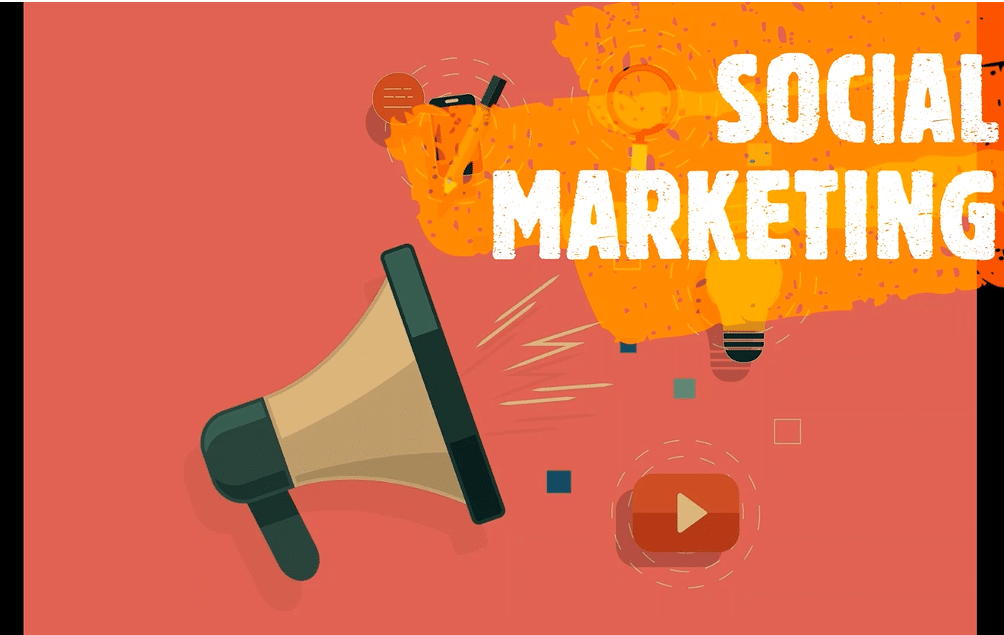We live in the digital era where everything including advertising can be done digitally. Speaking of advertisements, do you ever stop to think about the effort it took to get them online and have them pop up whether you want them or not? The effort is called media buying, I’m sure you must have heard that before, but even if you haven’t, that’s okay because you’re about to find out. In this piece, you’ll be learning about media buyers and what their job description is, just in case you’re interested in becoming one. You’ll also learn the challenges and significance of media buying in the advertising industry.
Let us begin with understanding media buying.
What is Media Buying?
Media buying is an act of buying an ad from a media company or agency like a tv station, newspaper, magazine, blog, or website. It also comprises ad price and placement negotiations, as well as research into the finest new ad placement.
Media buying involves planning and putting into action activities such as determining the best media buying strategy, soliciting bids, managing the flow of funds, analyzing results, etc.
The desire of a media buyer is to maximize an advertising campaign’s reach within a specified demographic while minimizing associated costs. Negotiating rates as well as conducting thorough research on potential billboard locations leads to successful media buying.
Media buying is made up of the following:
- Ad exchanges– Publishers and advertisers meet to exchange ad inventory. This type of media buying uses Real-Time-Bidding to facilitate programmatic media buying and selling
- Demand-side platforms– Allows ad agencies and advertisers to buy ad placements, set up campaigns, and optimize ad performance. This media buying type uses advertiser campaign management products which help in managing ads across social, display, mobile, and video advertising platforms.
- Supply-side platforms– Publishers generate revenue through the sale of ad space. By providing information on individual impressions, these platforms aid advertisers in comprehending the need for advertising.
These digital and display advertising are used as part of a strategic media buying plan to generate sales. Find out what your media buying team can do for you and your clients/stakeholders.
Importance of Media Buying
Media buying is important because it helps you to:
- Ensure your brand is visible to potential customers at the right time and place, whether you want to advertise on billboards or in their social media feeds.
- Increase exposure by using the best spaces. Media buyers are knowledgeable of media buying trends, which allows them to determine appropriate ad placements that provide the most interaction at the lowest cost. Furthermore, they have the ability to influence ad space availability and ad placements during major events.
- Increase your return on investment (ROI). Media buying is more than just a financial transaction for ad space. Media buying pros with wide networks can assist you in obtaining the best pricing for a brand.
Media Buying Procedure
The followings are the processes or stages involved in the media buying Procedure
- Establish a budget for guaranteed and non-guaranteed inventory.
Determine how much you’re willing to spend and whether you want to spend it on a specific amount of media inventory or an unspecified amount (which is usually discounted). - Distribute Requests for Proposals (RFPs).
Send RFPs to your preferred media outlets and determine which mix of outlets will most likely yield the desired results. - Completing the Insertion Order (IO)
Submit an Insertion Order (IO) to your preferred media outlets to secure your media order. - Distribute the Creative to Media Outlets
Ensure that each ad is suitably scaled for the parameters of each source, and then send your ad creative to your preferred media channels. - Begin the Campaign
Now, this is the moment! Make sure you have the necessary software and KPIs in place to track your progress and launch your campaign. - Continuous Monitoring and Optimization
Monitor your campaign’s key performance indicators (KPIs) on both the media outlet and internally to ensure you’re getting the best outcomes. - Compare ad spending to the original budget.
Compare your ad spending to your original budget to discover where you stand. - Reconcile costs and negotiate “make-goods” for underperforming advertisements.
If any of your advertisements are failing, compare the expenditures to your initial budget and negotiate “make-goods” to improve performance.
What Is the Distinction Between Media Buying and Media Planning?
While media buyers and media planners collaborate closely, their roles are very different. In a nutshell, the first step is media planning. Based on the team’s conclusions and plans, media buyers carry out the media plan, placing the agreed-upon advertising on the right channels.
Media Planning
The media planning process focuses on identifying an audience, conducting market research, developing a budget, and setting goals. Media planners collaborate with their customers to determine who their offering’s target audience is, which channels that audience utilizes and when, and what type of messaging that audience is most likely to interact with. With this information, the planning team will decide which channel to buy ad space on and at what price.
Media Buying
After the media plan has been established, media buyers communicate with their counterparts via the agreed-upon media sites. These are frequently sales/account executives tasked with locating relevant advertisers. These two parties bargain on placement, timing, and cost. To carry out media plans, media buyers frequently employ the following strategies:
- Programmatic purchases: Real-time bidding on ad space that fits consumer profiles facilitated by AI and algorithms (e.g., fashion designers leveraging a platform that will automatically bid on and put advertising on fashion-oriented channels).
- Direct purchases: When a media buyer negotiates ad rates and run times with a specific advertiser (for example, fashion designers working directly with the Vogue team to place advertising on their website or magazine).
- Manual purchases: Purchasing ad space and controlling bids directly through an ad platform such as AdWords.
Programmatic Media Buying
In contrast to traditional techniques of digital advertising, programmatic advertising use automated technology for media buying. Data insights and algorithms are used in programmatic media buying to show adverts to the right user at the right moment and at the right price.
To comprehend programmatic media buying, you must first understand the vocabulary associated with the process. To begin, programmatic media buying can be divided into three types:
Real-time bidding (RTB): Also known as open auction, RTB is the process through which inventory prices are determined in real-time through an auction. This is open to any advertiser or publication, as the name implies. RTB is regarded as a cost-effective method of purchasing media with a big audience.
Private marketplace (PMP): Like open auctions, PMPs include restrictions on who can participate. PMPs are only available to selected advertisers by invitation. In other situations, however, publishers may have a selection process in place that permits advertising to request an invitation.
Programmatic direct: When a publisher bypasses auctions and goes ahead to sell media inventory to an advertiser (or multiple advertisers) for a fixed cost per mile (CPM).
What is the Significance of Programmatic Media Buying?
The traditional media buying process is slow and inefficient since it involves a lot of manual work, generally with many requests for proposals (RFPs), human negotiations, and manual insertions of orders (IOs). Furthermore, advertisements are purchased in bulk, and advertisers have little control over inventory and placement.
Read our post on PROGRAMMATIC ADVERTISING: Meaning, Examples & Benefits for more information.
Who is a Media Buyer?
A media buyer is a marketer who purchases advertisements. Media buyers work alongside specialists such as magazine directors and social media coordinators. They can obtain print advertisements in a newspaper or magazine, audio adverts in podcasts or radio shows, and online places such as blogs and other websites.
Furthermore, they determine which advertisements are most effective based on the campaign’s objectives. A media buyer, for example, may select advertising spots based on impressions, clicks, and conversion targets.
How Long Does it Take to Become a Media Buyer?
Becoming a media buyer can take anywhere from six to ten years. A bachelor’s degree typically takes at least four years to complete, but education can take longer if you pursue a master’s degree. It can take two to five years after completing your degree to gain the experience required to become a media buyer.
What is the Working Atmosphere for a Media Buyer Like?
Media buyers frequently operate in an office setting. They may be required to attend meetings with other marketing professionals in order to plan campaigns. Media buyers may also travel to media vendor meetings or communicate with them via video and phone calls.
What Do Media Buyers Do?
As part of their work in the advertising industry, media buyers purchase advertising space and time on various media platforms such as television, radio, print, web, and outdoor advertising. They assist businesses in reaching their target audience in the most effective and cost-effective way possible by strategically placing advertisements. The media buyer negotiates fees and placement positions with publishers or ad networks that are in line with their client’s business objectives and budget.
Media buyers collaborate with copywriters, art directors, and account managers at advertising agencies or in-house marketing departments to create effective advertising campaigns. They also track and assess the effectiveness and ROI of advertisements.
Challenges of Media Buying
Investing in skilled media buying teams and processes, like any other marketing project, requires demonstrating value. To accomplish this, media buying teams must have analytical tools that allow them to link conversions and KPIs to a single ad. They also require real-time information in order to make in-campaign changes to underperforming ads. Having said that, the following are the main challenges in media buying:
#1. Ad Fraud Avoidance
Ad fraud happens when a company buys ad space on a fake website, or when a company has to pay more for an ad because of bots or click farms. This is very common in programmatic advertising. Although programmatic buying can be advantageous for real-time ad placements, it can also lead to ad fraud because there is less oversight of the sites where advertising is purchased, resulting in squandered cash.
#2. Marketing Evaluation
When it comes to spending money on advertising, media buyers must determine which ads are effective. They will then be able to better distribute budgets. Many businesses, however, struggle to implement an attribution model that appropriately captures their whole media mix. This makes it impossible to determine when an ad placement has performed as expected, resulting in a specific conversion.
#3. In-Flight Campaign Optimization
Yet another challenge for media buyers is optimizing advertising in the middle of a campaign. Most marketing results aren’t available until after the campaign has ended, making it too late to make changes to advertising budgets. To address this, marketing teams must invest in marketing solutions that have the processing power to provide precise analytics on marketing performance while the campaign is running.
#4. Contracts that are unambiguous
Contract talks can be another source of difficulty in media procurement. To ensure that precise expectations are satisfied, media buyers must ensure that everything negotiated is clearly specified in the contract. For example, if an advertiser only wishes to target leads in the United States, this should be mentioned clearly. When this stage is skipped, businesses risk wasting money on an unsuitable target population.
Related Posts
- AMAZON ADVERTISING: Detailed Guide To Amazon Advertising Strategy
- DISPLAY ADVERTISING: Definition, Strategy,& Benefits
- HOW DOES GOOGLE MAKE MONEY? The Revenue Streams In 2023
- Private Placement: Definitions, Life Insurance And Investment Offers (+ How it works)





